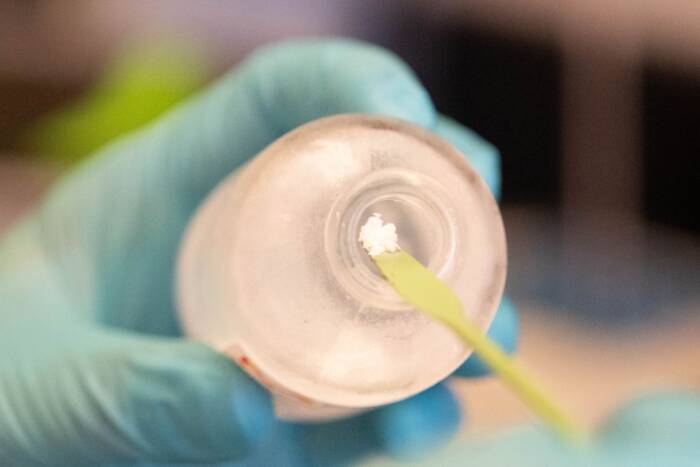Rockefeller announces 31 percent reduction in carbon emissions
Five years after the university committed to reducing its carbon footprint as part of Mayor Michael Bloomberg’s 2030 Carbon Challenge, the results from several institutions have been announced. Rockefeller’s carbon emissions fell by nearly 31 percent, based on 2005 levels. Rockefeller was one of four participating universities that reached their target ahead of schedule.

Getting results. Mayor Michael Bloomberg (at podium) with JetBlue CEO David Barger and Rockefeller President Marc Tessier-Lavigne (right) at a press conference to announce results of the Carbon Challenge “early achievers.”
The Carbon Challenge, launched in 2007 as part of Bloomberg’s PlaNYC sustainability program, challenged New York City universities to reduce their emissions by at least 30 percent over a 10-year period. Seventeen institutions accepted the challenge, and 11 hospital organizations joined two years later. Rockefeller’s reduction of 30.6 percent represents over $1 million in saved energy costs per year.
The results were announced by Bloomberg at a press conference held today in Rockefeller’s Philosophers Garden; he was joined by Rockefeller President Marc Tessier-Lavigne as well as leaders from the other participating institutions and officials from the Mayor’s Office of Long-Term Planning and Sustainability and the New York State Energy Research and Development Authority. Executives from several companies who have also committed to lowering their carbon emissions, including JetBlue Airways and BlackRock, were also present.
“Our carbon reduction benefits the university community, our local community, the city, and ultimately, the world,” Tessier-Lavigne told reporters. “It frees up resources that we can apply to research into cancer and Alzheimer’s disease, and to train our graduate students. It’s the smart thing to do, and it’s the right thing to do.”
“The Carbon Challenge is an essential partnership between the city and our businesses, universities and organizations who share our commitment to a greener, greater New York,” Bloomberg said. “I want to applaud the commitment of the 10 companies making the Carbon Challenge pledge, as well as the universities and hospitals that have already taken steps to become more efficient. Their leadership on this issue is not only going to move our city toward a more sustainable future; we also hope it will inspire others to follow suit.”
To achieve its goal, the university phased out its use of #6 heating oil in favor of natural gas and replaced a 21-year-old boiler with a high-efficiency model capable of generating the same amount of steam with approximately 25 percent less fuel. It also rebalanced air flows throughout the campus and adjusted temperature settings in many areas, including reducing heating and cooling during nights and weekends. As part of its gut renovation of two historic buildings on the north part of the campus, the university installed variable speed pumps and fans in HVAC systems serving more than 125,000 square feet of lab space. The new buildings were built to LEED standards.

Carbon sink. Rockefeller University carbon emissions over a six-year period.
Investments were also made in lighting retrofits and new lighting controls throughout several buildings, including the installation of motion sensors that ensure lighting is reduced in unoccupied areas. Lighting loads were reduced by as much as 50 percent in some buildings.
A key to the university’s success involved changes to laboratory air systems. Because of the chemicals in use, laboratory air systems are required by code to use 100 percent outside air, greatly increasing heating and cooling costs. Variable air volume controls installed in many Rockefeller labs make it possible to vary the quantity of air delivered based on occupation levels and cooling requirements. The university’s “shut the sash” campaign, by raising awareness of the energy wasted when laboratory fume hoods are left open, also contributed to the lower emissions. (Sash alarms installed on many fume hoods serve as an additional reminder to users to keep the sash shut.)
“The Rockefeller University’s administration made energy a major priority, making significant upgrades to the university’s buildings and infrastructure,” says Alex Kogan, vice president of plant operations. “As a result, in less than five years The Rockefeller University met the mayor’s Carbon Challenge goal and now operates more efficiently and sustainably.”
Learn more about Rockefeller’s sustainability efforts, including monthly Green Tips.


